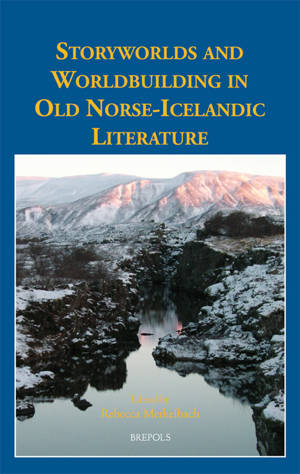
- Afhalen na 1 uur in een winkel met voorraad
- Gratis thuislevering in België vanaf € 30
- Ruim aanbod met 7 miljoen producten
- Afhalen na 1 uur in een winkel met voorraad
- Gratis thuislevering in België vanaf € 30
- Ruim aanbod met 7 miljoen producten
Zoeken
Storyworlds and Worldbuilding in Old Norse-Icelandic Literature
Rebecca Merkelbach
Hardcover | Engels
€ 121,90
+ 243 punten
Omschrijving
The storyworlds of Old Norse-Icelandic literature are multifaceted and variable, ranging from the worlds of heroic poetry and popular romance to the recognizable narrative universe built by the Sagas of Icelanders. Despite this, they have rarely been explored, and narratological theories of storyworlds or fantasy scholarship have had little impact on the field. Yet given that every story creates its own storyworld, it can be assumed that Old Norse-Icelandic literary texts, too, build worlds - and these worlds are diverse and complex, as shown by the contributors in this volume: they constantly engage with one another, exploring, shaping, and expanding, while also entering into a dialogue with the primary world from which they draw. This volume brings together scholars from different areas of Old Norse-Icelandic studies to explore questions related to not only the storyworlds of medieval Icelandic literature, but also those of legal and learned texts, and to the way that they are built. Together they inquire into the nature of these worlds, into their preservation and transmission in manuscripts, their transmediality, transnarrativity, and reception. In doing so, these inquiries showcase the breadth of new perspectives on medieval Icelandic literature made possible by the application of narratological theory in its study.
Specificaties
Betrokkenen
- Auteur(s):
- Uitgeverij:
Inhoud
- Aantal bladzijden:
- 351
- Taal:
- Engels
Eigenschappen
- Productcode (EAN):
- 9782503611648
- Verschijningsdatum:
- 22/05/2025
- Uitvoering:
- Hardcover
- Formaat:
- Genaaid
- Gewicht:
- 526 g

Alleen bij Standaard Boekhandel
+ 243 punten op je klantenkaart van Standaard Boekhandel
Beoordelingen
We publiceren alleen reviews die voldoen aan de voorwaarden voor reviews. Bekijk onze voorwaarden voor reviews.








